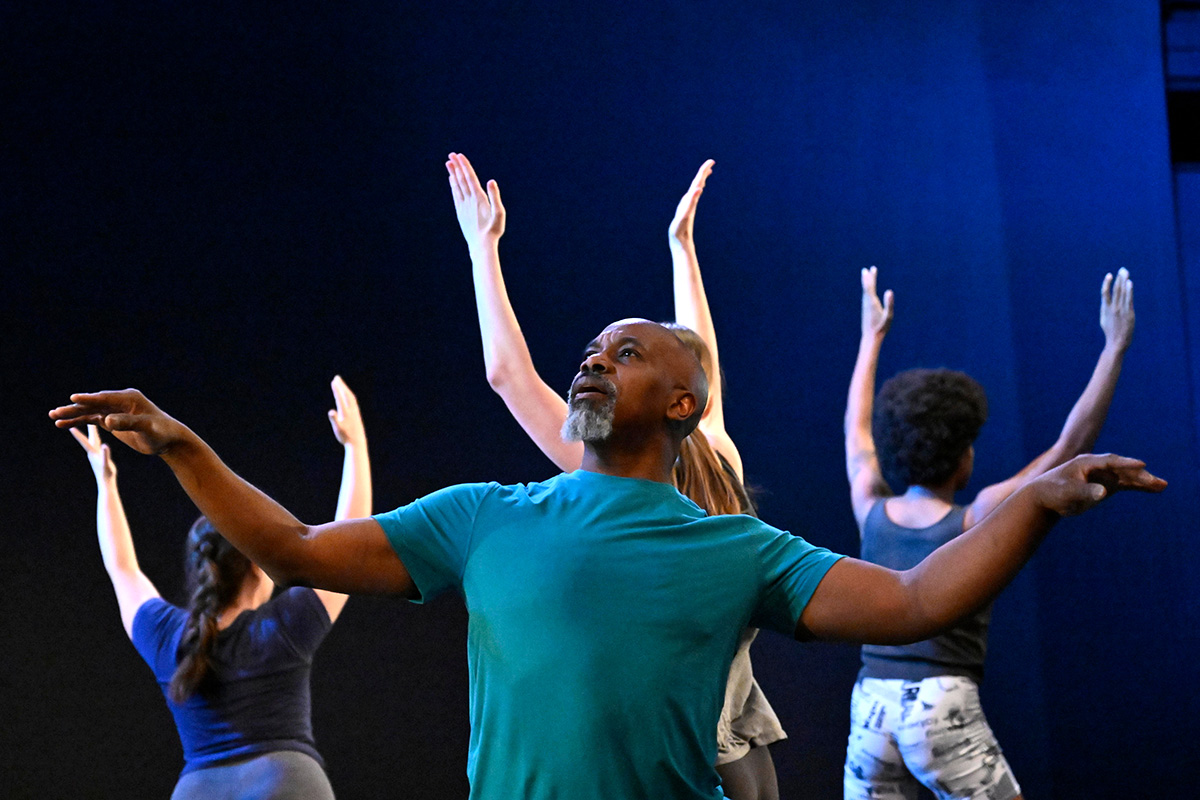
Four women choreographers from the University of Illinois Urbana-Champaign dance department will present their work at Studiodance 2023. The dance performance is Jan. 26-28 at Krannert Center for the Performing Arts, with a livestreamed performance of an invited dress rehearsal
Jan. 25.
Graduate dance student Joe Bowie dances in "Heap Loose," by Bessie Award-winning choreographer and dance professor Jennifer Monson.
Photo by Fred Zwicky
CHAMPAIGN, Ill. — Four women choreographers from the University of Illinois Urbana-Champaign dance department will present work at Studiodance 2023 examining toxic environments, biases and assumptions, new motherhood and the resilience of women.
Studiodance 2023 is Jan. 26-28 at Krannert Center for the Performing Arts. A livestreamed performance of an invited dress rehearsal is available online Jan. 25.
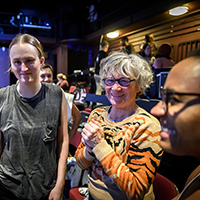
Choreographer and dance professor Jennifer Monson talks with dance students (left to right) Joe Bowie, Elsa Gaston and Ty Lewis.
Photo by Fred Zwicky
Dance professor Jennifer Monson is a Bessie Award-winning choreographer and dancer whose work explores environmental phenomena and the human impact on natural sites. Her work for Studiodance, "Heap Loose," is part of a larger project, "move thing," which considers the movement of toxicity. The project focuses on three contaminated sites, one of which is the coal ash ponds from a closed Vermilion County, Illinois, power plant that are now seeping into the Vermilion River.
Monson said she was influenced by the 2019 "Hot Spots" exhibition at Krannert Art Museum, which considered the impact of the nuclear industry and radioactive waste, and "the way artists were figuring out how to create the experience of something that is invisible but affects all of us."
Yet, even in an environment that is toxic for humans, other forms of life thrive. Monson said she is interested in thinking conceptually about disturbances in the environment, how toxins become part of and transform an ecosystem, and how life adapts.
"Heap Loose" features eight dancers whose movement is influenced in part by the molecular structure of some of the world's most hazardous toxins and by shells removed from their environment, Monson said. She said the kinesthetic experience of dance is a way of understanding and relating to the world.
Doctoral music student Joy Yang, a pianist and theremin player, and sound artist Elliot Emadian created the music for "Heap Loose," which includes jazz piano, ethereal theremin and electronic accompaniment.
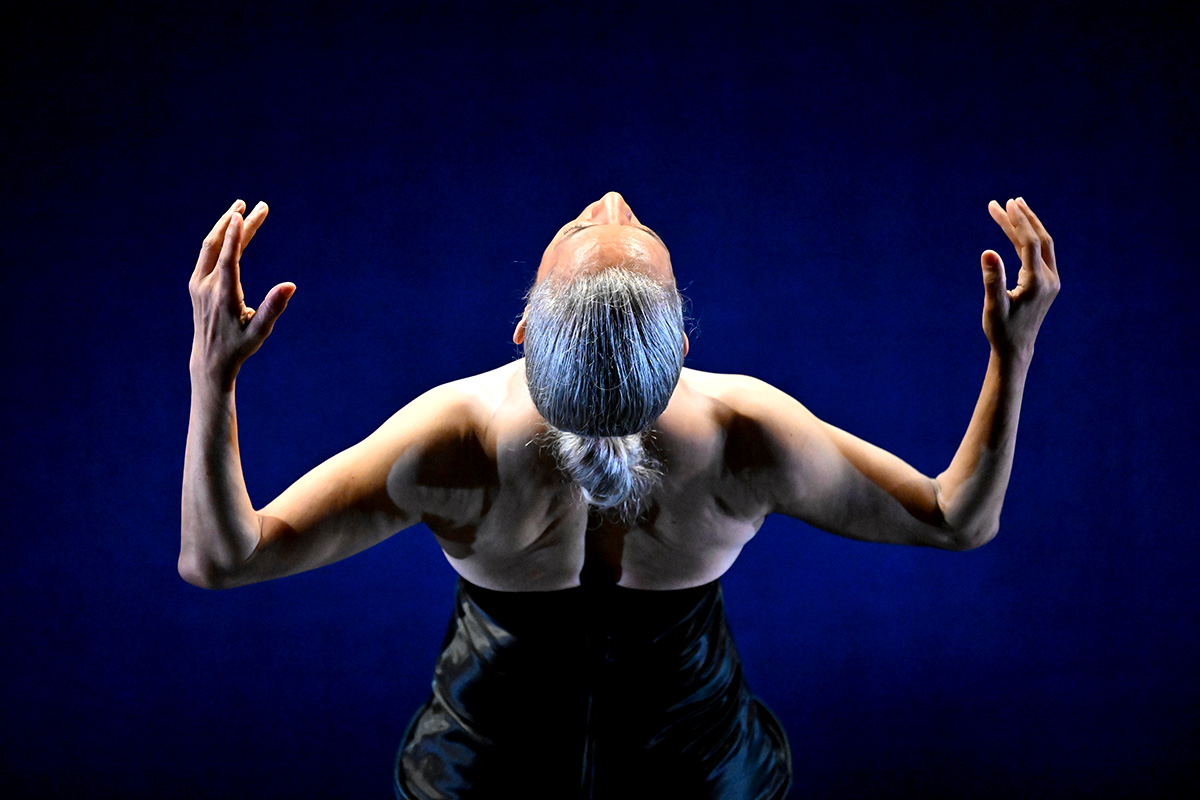
Choreographer and dance professor Roxane D'Orleans Juste performs her solo work "L'Equivoque."
Photo by Fred Zwicky
Dance professor Roxane D'Orleans Juste will perform a solo piece that she choreographed, "L'Equivoque." She described the work as a tragicomedy that examines biases and assumptions and that reflects both reality and fantasy.
"L'Equivoque" evokes a world of glamorous illusion and the imperfection of reality through movement. The piece offers mixed messages that reflect the duality that exists within human emotions when facing society's ambiguity regarding identity, gender, systems of belief and intention, Juste said.
"This character is finding the freedom to be both vulnerable and powerful. It's as if she has a double life. She's uncovering a different part of herself that needs to say something," she said. "It's fun and very challenging to let the two sides of our mind or our spirit come forward."
The character interacts directly with the audience, including through a monologue in the second portion of the piece.
For the music for her work, Juste chose two operas by German composer Johann Adolf Hasse and French composer George Bizet.
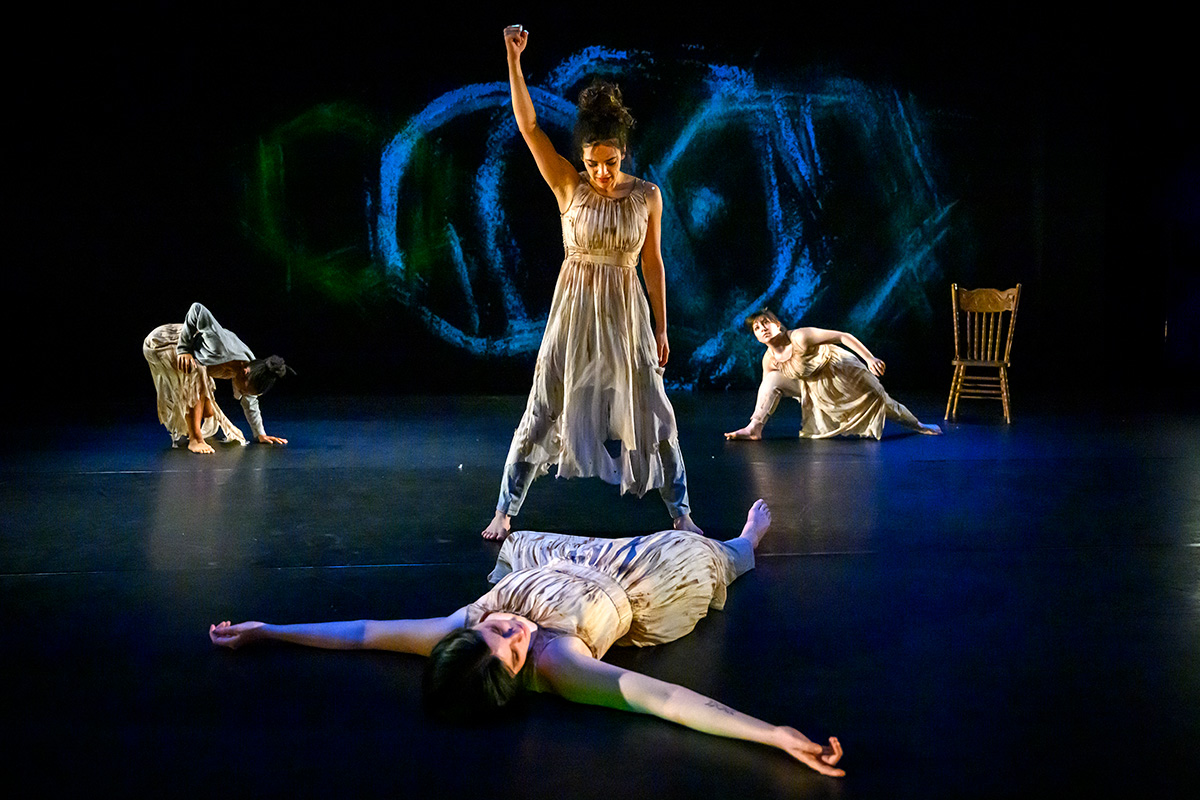
Dance students Isabella Saldana, Katherine Henderson, Annie Morgan and Jaden Monroe perform in "Titular Creature," by choreographer and dance professor Abby William Chin.
Photo by Fred Zwicky
Graduate student Abby Williams Chin choreographed "Titular Creatures," which considers the "mother as monster" trope in horror movies and how it felt as she entered motherhood. Chin gave birth to her son, now age 1½, shortly before beginning her thesis research.
"I definitely had my monstrous moments in that first year, with sleep deprivation and the overwhelming feeling and postpartum anxiety and having a full schedule. I felt like a completely different person," Chin said.
Her choreography drew on the physicality of horror movies, including low-budget, campy films, as well as seeing her son's hands and feet shifting in her very pregnant belly and thinking about loss of control.
"There are moments of levity and joy that peek through and stop the dance in its tracks – a keyhole of light where a kid does something amazing and you're overwhelmed by love and that light, then it goes back into a visibly taxing place," she said.
The musical score, created by percussionist and dance accompanist Cody Jensen, includes lullabies, the rhythm from Chin's breast pump and a recording of her reading a list of concerns she made for her son's pediatrician, "verbalizing an undercurrent of anxiety and stress," she said.
The nine dancers wear dark, ethereal dresses that are distressed as if a toddler had smudged or torn them.
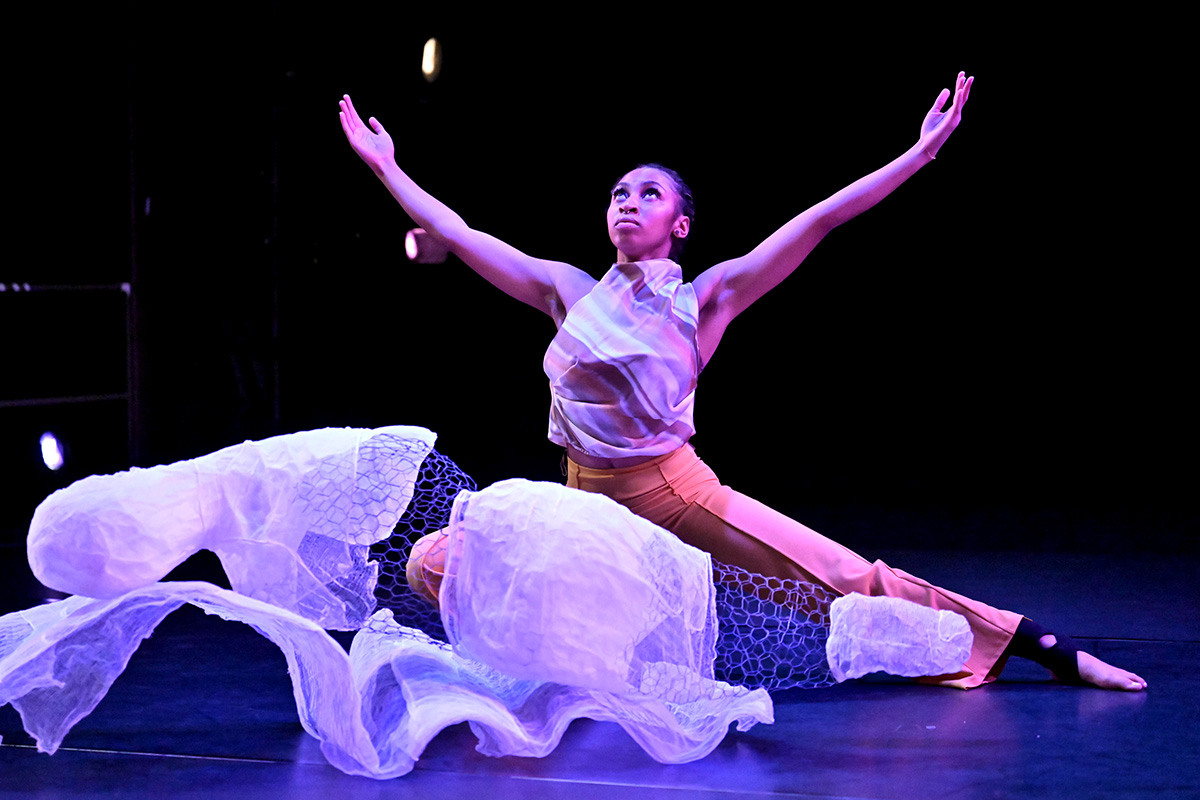
Dance student Alana Larry performs in "Resilience Rebounded," by choreographer and dance professor Laura Chiaramonte.
Photo by Fred Zwicky
Dance professor Laura Chiaramonte's work "Resilience Rebounded" draws on early feminist writings, including those by Charlotte Perkins Gilman and Virginia Woolf, to look at the resilience of women who have overcome oppression and found a way to make their voices heard. The foundations of the dance's movement come from three solo, semiautobiographical works Chiaramonte choreographed at different points in her career.
Chiaramonte created the soundscape for the piece that includes bells and droning sounds.
She collaborated with her mother, mixed media artist Janet Chiaramonte, who created sculptural pieces for the set. One is about 20 feet long by 6 feet wide and is made from waxed paper, cheesecloth and corn starch. It hangs above the stage and expresses both an ethereal feminine quality and a resilience, Laura Chiaramonte said.
"It has an airy, cloudlike sense to it," she said.
A second sculpture is made of chicken wire with the form of a body encased in fabric and wrapped around it. Both pieces represent how women have been oppressed in certain ways by society but aren't weighed down and how they build strength from that, Chiaramonte said.






